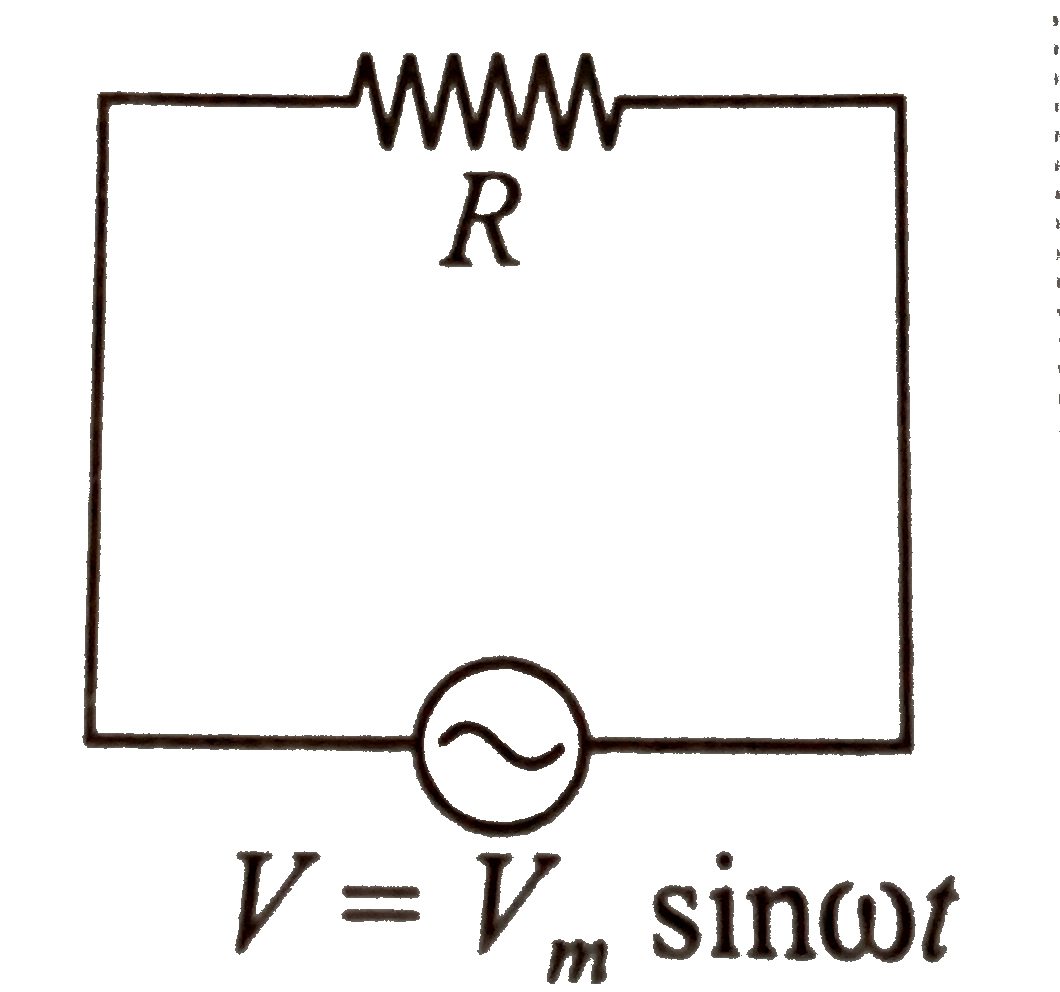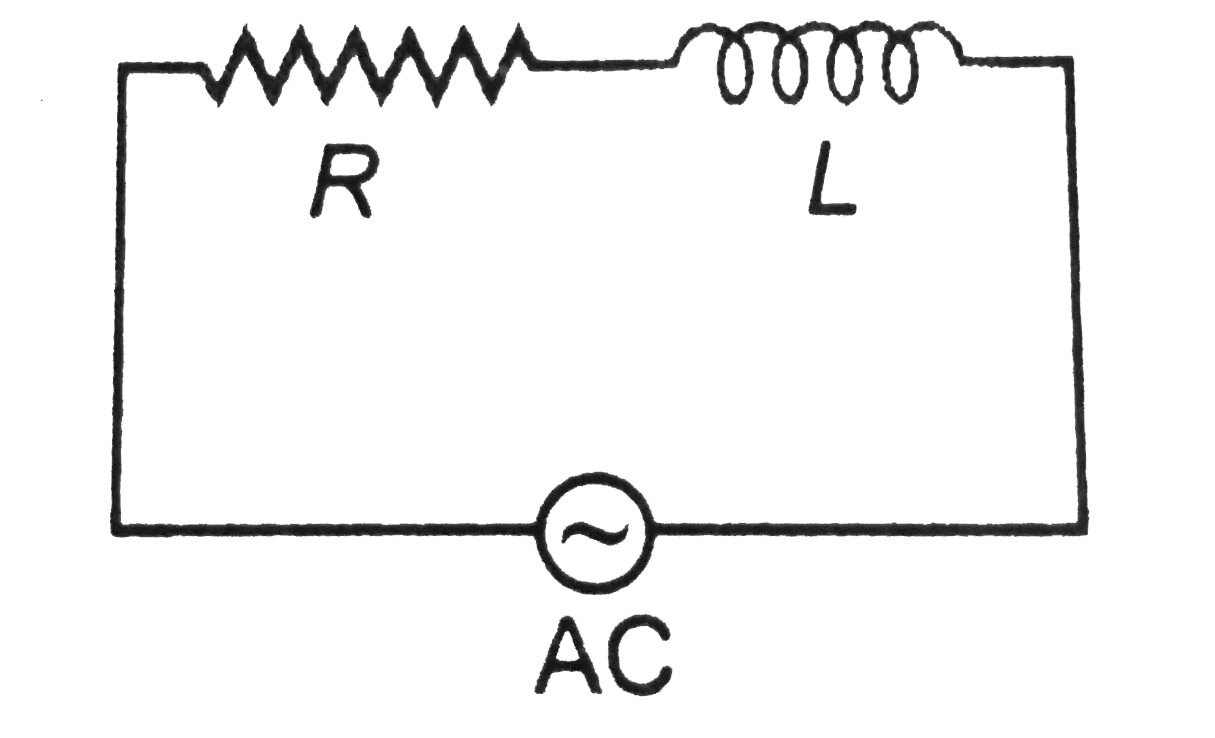In an AC circuit, voltage V = V0sinωt and inductor L is connected across the circuit. Then the instantaneous power will be
V222ωLsinωt
−V202ωLsinωt
−V202ωLsin2ωt
V20ωLsin2ωt
To solve the problem of finding the instantaneous power in an AC circuit with a voltage given by V=V0sin(ωt) and an inductor L connected across it, we can follow these steps:
1. Identify the Voltage Across the Inductor:
The voltage across the inductor is given by:
VL=Ldidt
where i is the current through the inductor.
2. Express Current in Terms of Voltage:
From the equation V=V0sin(ωt), we can relate the current i to the voltage across the inductor:
Ldidt=V0sin(ωt)
Rearranging gives:
didt=V0Lsin(ωt)
3. Integrate to Find Current:
Integrating both sides with respect to time t:
i=∫V0Lsin(ωt)dt
The integral of sin(ωt) is:
i=−V0Lωcos(ωt)+C
Assuming the initial current i(0)=0, we can find the constant C:
i(0)=−V0Lωcos(0)+C=0⟹C=V0Lω
Thus, the current becomes:
i(t)=V0Lω(1−cos(ωt))
4. Calculate Instantaneous Power:
The instantaneous power P in the circuit is given by:
P=V⋅i
Substituting the expressions for V and i:
P=V0sin(ωt)⋅(V0Lω(1−cos(ωt)))
Simplifying this gives:
P=V20Lωsin(ωt)(1−cos(ωt))
5. Using Trigonometric Identity:
We can use the identity 2sinAcosA=sin(2A) to express the power in a more useful form. Thus:
P=V202Lωsin(2ωt)
Final Answer:
The instantaneous power in the circuit is:
P=V202Lωsin(2ωt)
The voltage across the inductor is given by:
VL=Ldidt
where i is the current through the inductor.
From the equation V=V0sin(ωt), we can relate the current i to the voltage across the inductor:
Ldidt=V0sin(ωt)
Rearranging gives:
didt=V0Lsin(ωt)
Integrating both sides with respect to time t:
i=∫V0Lsin(ωt)dt
The integral of sin(ωt) is:
i=−V0Lωcos(ωt)+C
Assuming the initial current i(0)=0, we can find the constant C:
i(0)=−V0Lωcos(0)+C=0⟹C=V0Lω
Thus, the current becomes:
i(t)=V0Lω(1−cos(ωt))
The instantaneous power P in the circuit is given by:
P=V⋅i
Substituting the expressions for V and i:
P=V0sin(ωt)⋅(V0Lω(1−cos(ωt)))
Simplifying this gives:
P=V20Lωsin(ωt)(1−cos(ωt))
We can use the identity 2sinAcosA=sin(2A) to express the power in a more useful form. Thus:
P=V202Lωsin(2ωt)
The instantaneous power in the circuit is:
P=V202Lωsin(2ωt)
Similar Questions
Knowledge Check
An ac source of voltage V=Vmsinωt is connected across the resistance R as shown in figure. The phase relation between current and voltage for this circuit is
 Aboth are in phaseBboth are out of phase by 90∘Cboth are out of phase by 120∘Dboth are out of phase by 180∘
Aboth are in phaseBboth are out of phase by 90∘Cboth are out of phase by 120∘Dboth are out of phase by 180∘
In series LCR circuit voltage drop across resistance is 8V, across inductor is 6V and across capacitor is 12V. Then
View SolutionA circuit contains resistance R and an inductance L in series. An alternating voltage V=V0sinωt is applied across it. The currents in R and L respectively will be
 .
.
View SolutionA circuit contains resistance R and an inductance L in series. An alternating voltage V=V0sinωt is applied across it. The currents in R and L respectively will be
 .
.
View SolutionA small signal voltage V(t)=V0sinωt is applied across an ideal capacitor C:
View SolutionIn series LCR circuit R=18Ω and impedence is 33Ω. An Vrms voltage 220V is applied across the circuit . The true power consumed in AC circuit is
View SolutionA 0.7 henry inductor is connected across a 120V−60HzAC source. The current in the inductor will be very nearly
View SolutionAn alternating voltage E=E0sinωt , is applied across a coil of inductor L. The current flowing through the circuit at any instant is
View Solution
